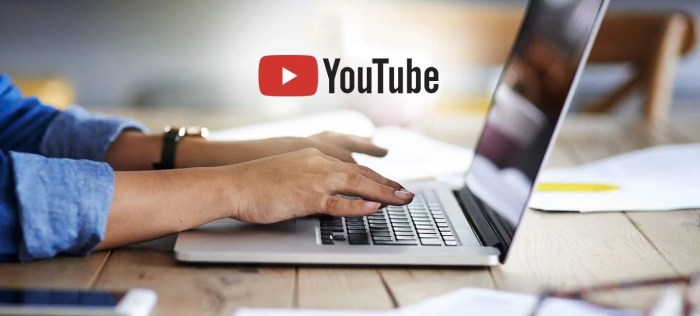Creating Educational Videos for YouTube sets the stage for an exciting journey into the world of content creation, offering insights on audience engagement, video planning, production tools, visual elements, editing, and viewer interaction.
Get ready to dive into the realm of YouTube education with this comprehensive guide!
Understanding the Audience
Knowing your target audience is crucial when creating educational videos for YouTube. Understanding who your viewers are allows you to tailor your content to meet their needs and preferences, ultimately increasing engagement and viewership.
Researching and understanding the demographics of your viewers can be done through various tools provided by YouTube, such as YouTube Analytics. This data can help you identify the age, gender, location, and interests of your audience, providing valuable insights that can guide your content creation process.
Tailoring Content Based on Audience Preferences
To tailor your content based on audience preferences, consider the following strategies:
- Use language and tone that resonates with your target audience. For example, if your viewers are high school students, use a casual and relatable tone.
- Create content that addresses topics and issues relevant to your audience’s interests and needs. Conduct surveys or engage with your viewers through comments to gather feedback.
- Utilize engaging visuals, graphics, and examples that appeal to your audience. Visual aids can help enhance understanding and retention of the material.
- Keep your videos concise and focused to maintain the attention of your audience. Avoid unnecessary jargon or complex explanations that may alienate viewers.
- Experiment with different video formats, such as tutorials, animations, or Q&A sessions, to determine what resonates best with your audience.
Planning Video Content
When it comes to creating educational videos for YouTube, outlining video content before production is crucial. This helps you stay organized, ensure you cover all necessary information, and maintain the flow of your video.
To create engaging scripts for educational videos, start by clearly defining your objectives and target audience. Keep your language simple and conversational, use storytelling techniques to capture attention, and incorporate visuals to enhance understanding. Remember to include a call-to-action to encourage viewer engagement.
To structure content and maintain viewer interest throughout the video, consider the following tips:
Tip 1: Grab Attention from the Start
- Start with a hook or interesting fact to capture viewer interest.
- Clearly Artikel what viewers can expect to learn or gain from watching the video.
Tip 2: Break Down Complex Information
- Use visuals, animations, or real-life examples to explain complex concepts.
- Break down information into digestible chunks to avoid overwhelming viewers.
Tip 3: Keep it Engaging
- Include interactive elements like quizzes, polls, or questions to keep viewers engaged.
- Use a variety of visual and auditory elements to maintain interest throughout the video.
Video Production Tools and Equipment

When it comes to creating dope educational videos, you gotta have the right tools and equipment on deck to make it all come together like a pro. Let’s break it down for ya.
Essential Tools and Equipment
To kick things off, here’s a list of the must-haves for your video production arsenal:
- A high-quality camera to capture all the action in crisp detail. Look for options like the Canon EOS Rebel T7i or the Sony A6400 for top-notch video quality.
- A reliable microphone to ensure your voice comes through crystal clear. Consider investing in a Blue Yeti USB microphone or a Rode VideoMic Pro for professional sound.
- Proper lighting setup to brighten up your videos and make sure you’re looking fly on screen. Check out softbox lights or ring lights for that perfect glow.
- A sturdy tripod to keep your camera steady and your shots looking smooth. Look for options like the Manfrotto BeFree or the Joby GorillaPod for versatile filming.
Software Options for Video Editing, Creating Educational Videos for YouTube
When it’s time to edit your video masterpiece, you’ll need the right software to bring it all together. Here are some popular options to consider:
- Adobe Premiere Pro: A professional-grade editing software used by many in the industry for its extensive features and versatility.
- Final Cut Pro X: An Apple-exclusive editing software known for its user-friendly interface and powerful editing tools.
- DaVinci Resolve: A free editing software with advanced color correction capabilities, perfect for adding that extra polish to your videos.
Recommendations for Cameras, Microphones, and Lighting
When it comes to choosing the right gear for your educational videos, here are some top recommendations to take your production quality to the next level:
- Camera: Consider investing in a Canon EOS 90D or a Sony A7 III for stunning video quality and versatility.
- Microphone: Opt for a Rode NT1-A or a Shure SM7B for professional-grade audio that will make your voice pop.
- Lighting Setup: Enhance your videos with the Neewer 660 LED Video Light Kit or the Godox SL-60W for a bright and balanced lighting setup.
Visual and Audio Elements: Creating Educational Videos For YouTube
Visuals and graphics play a crucial role in educational videos by enhancing the overall learning experience. They help in breaking down complex information, making it more digestible and engaging for the audience. Additionally, visuals can aid in retention and understanding of the material being presented.
Creating Engaging Animations
Creating engaging animations is a great way to enhance the content of educational videos. Here are some tips to create compelling animations:
- Keep it simple: Avoid cluttering the screen with too much information. Focus on key concepts and use visuals to support them.
- Use storytelling: Create a narrative with your animations to make the content more relatable and memorable.
- Utilize motion graphics: Adding movement to your animations can make them more dynamic and attention-grabbing.
- Sync with audio: Ensure that your animations are synchronized with the audio to create a seamless viewing experience.
Ensuring High-Quality Audio
High-quality audio is essential for educational videos to ensure clear communication and engagement. Here are some tips to achieve top-notch audio:
- Invest in a good microphone: A quality microphone can significantly improve the audio clarity of your videos.
- Choose the right recording environment: Select a quiet space with minimal background noise to record your audio.
- Adjust audio levels: Make sure to balance the audio levels to prevent any distortion or muffled sound.
- Edit and enhance audio: Use audio editing tools to remove any unwanted noise, enhance clarity, and optimize the audio for better quality.
Editing and Post-Production
When it comes to creating educational videos, the editing and post-production phase is crucial in enhancing the overall quality and engaging the audience. This stage allows you to fine-tune your content and make it more visually appealing and informative.
Techniques for Editing Educational Videos
- Trimming and cutting unnecessary footage to keep the video concise and focused.
- Adding text overlays to highlight key points or provide additional information.
- Using transitions to smoothen the flow between different sections of the video.
- Incorporating effects like animations or graphics to make the content more engaging.
Optimizing Videos for YouTube
- Adding relevant tags to improve searchability and reach a wider audience.
- Writing detailed descriptions that include s related to the video content.
- Creating eye-catching thumbnails that entice viewers to click on the video.
Engaging with Viewers

Building a community around educational content is crucial for creating a loyal and engaged audience. By fostering a sense of belonging and connection, viewers are more likely to come back for more content and actively participate in discussions.
Strategies for Building a Community
- Encourage viewers to leave comments and feedback by asking open-ended questions at the end of each video.
- Create a dedicated space for discussions, such as a community tab on your YouTube channel or a Facebook group.
- Host live Q&A sessions or virtual meetups to interact with viewers in real-time.
- Collaborate with other educational content creators to cross-promote each other’s channels and expand your reach.
Importance of Responding to Comments
- Show your viewers that you value their input by responding to comments and feedback in a timely manner.
- Engage in meaningful conversations with your audience to build trust and credibility.
- Address any questions or concerns raised by viewers to demonstrate your expertise and dedication to helping them learn.
Encouraging Viewer Interaction
- Use polls and quizzes in your videos to make learning interactive and fun for your audience.
- Add calls to action at the end of each video, prompting viewers to like, share, and subscribe to your channel.
- Invite viewers to participate in challenges or contests related to the educational content you provide.